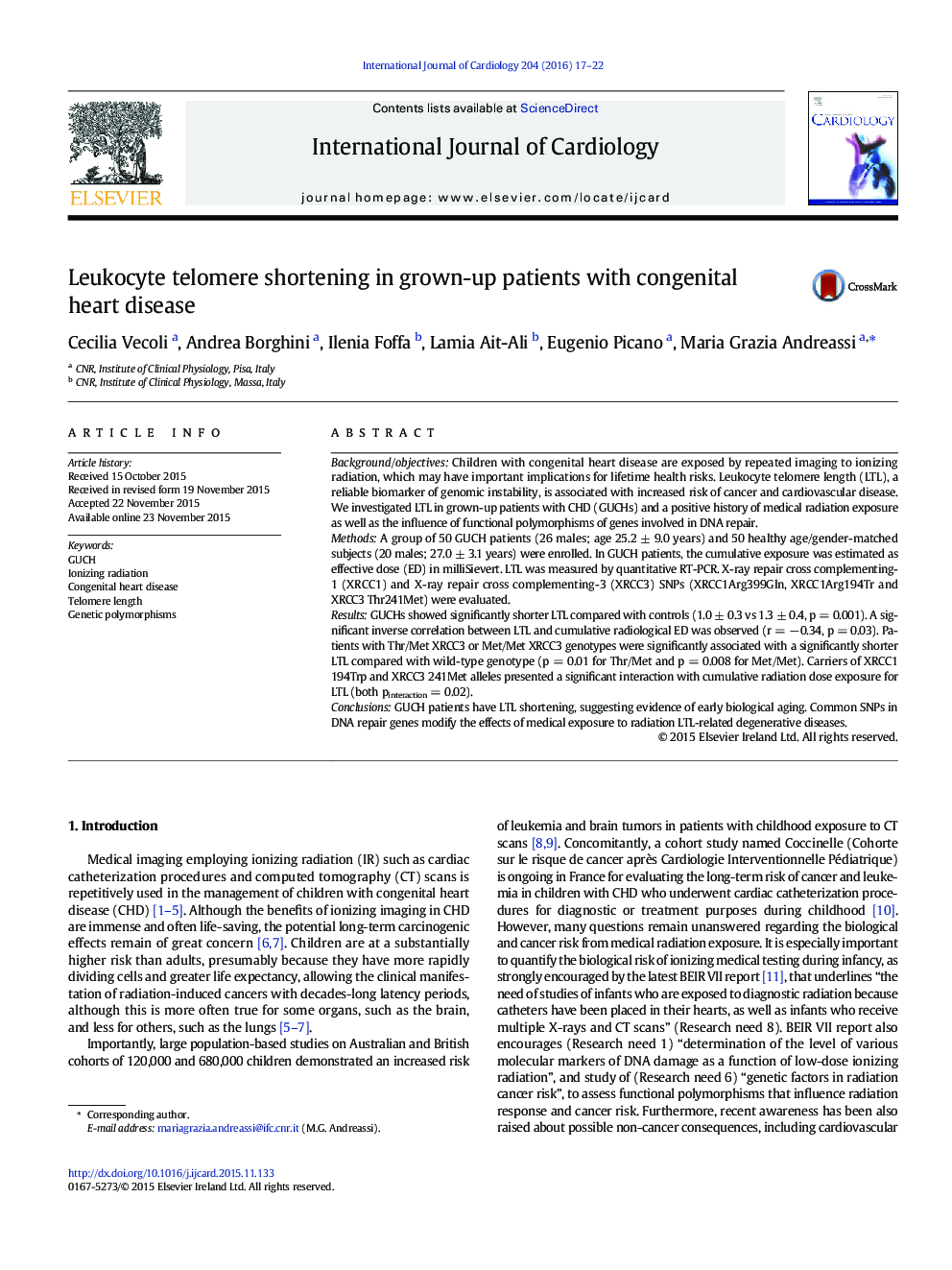| Article ID | Journal | Published Year | Pages | File Type |
|---|---|---|---|---|
| 2928672 | International Journal of Cardiology | 2016 | 6 Pages |
Background/objectivesChildren with congenital heart disease are exposed by repeated imaging to ionizing radiation, which may have important implications for lifetime health risks. Leukocyte telomere length (LTL), a reliable biomarker of genomic instability, is associated with increased risk of cancer and cardiovascular disease. We investigated LTL in grown-up patients with CHD (GUCHs) and a positive history of medical radiation exposure as well as the influence of functional polymorphisms of genes involved in DNA repair.MethodsA group of 50 GUCH patients (26 males; age 25.2 ± 9.0 years) and 50 healthy age/gender-matched subjects (20 males; 27.0 ± 3.1 years) were enrolled. In GUCH patients, the cumulative exposure was estimated as effective dose (ED) in milliSievert. LTL was measured by quantitative RT-PCR. X-ray repair cross complementing-1 (XRCC1) and X-ray repair cross complementing-3 (XRCC3) SNPs (XRCC1Arg399Gln, XRCC1Arg194Tr and XRCC3 Thr241Met) were evaluated.ResultsGUCHs showed significantly shorter LTL compared with controls (1.0 ± 0.3 vs 1.3 ± 0.4, p = 0.001). A significant inverse correlation between LTL and cumulative radiological ED was observed (r = − 0.34, p = 0.03). Patients with Thr/Met XRCC3 or Met/Met XRCC3 genotypes were significantly associated with a significantly shorter LTL compared with wild-type genotype (p = 0.01 for Thr/Met and p = 0.008 for Met/Met). Carriers of XRCC1 194Trp and XRCC3 241Met alleles presented a significant interaction with cumulative radiation dose exposure for LTL (both pinteraction = 0.02).ConclusionsGUCH patients have LTL shortening, suggesting evidence of early biological aging. Common SNPs in DNA repair genes modify the effects of medical exposure to radiation LTL-related degenerative diseases.
